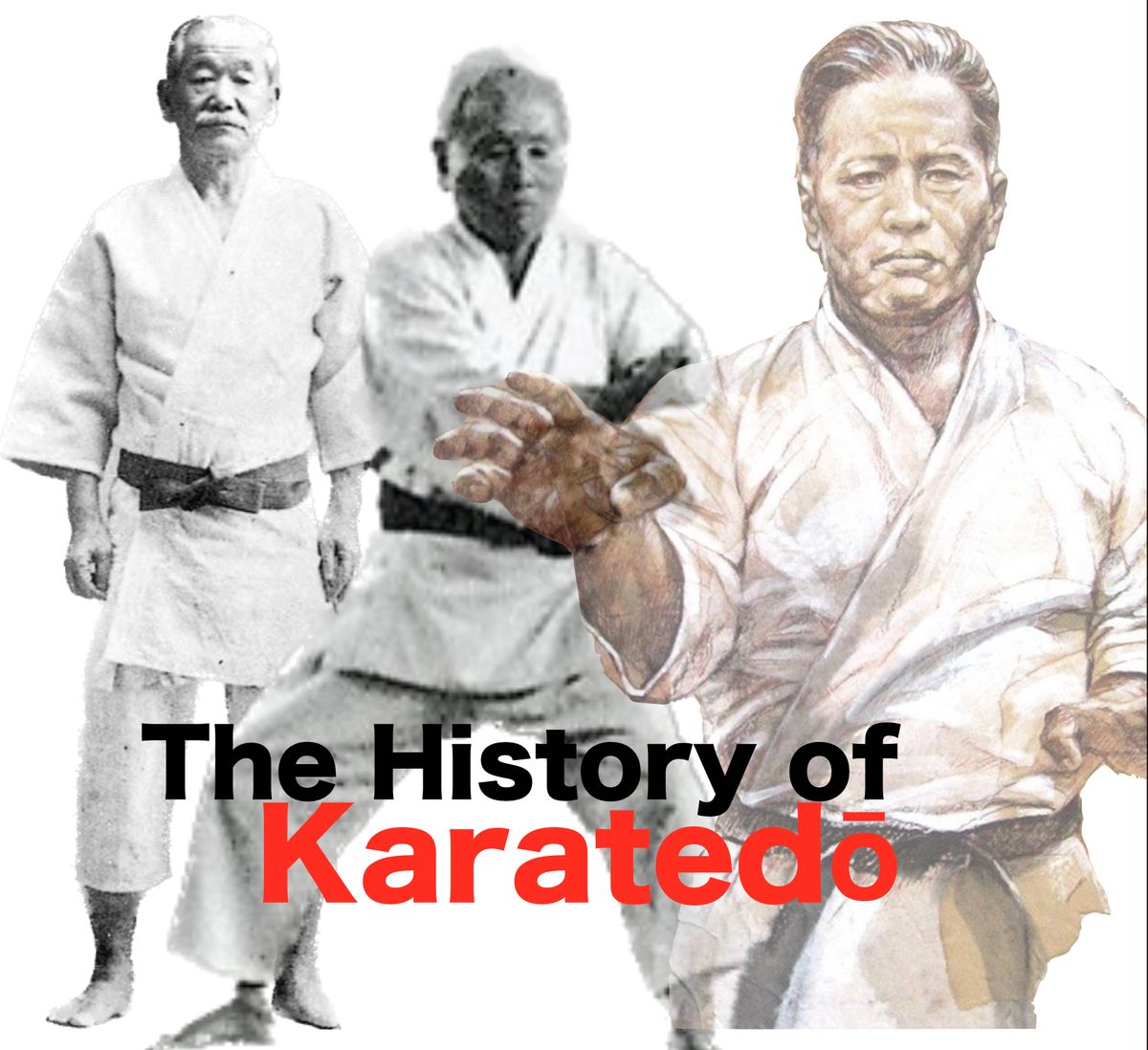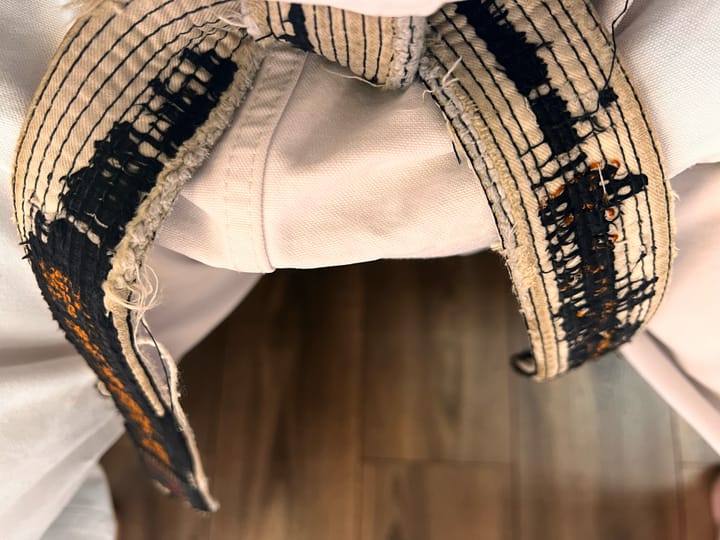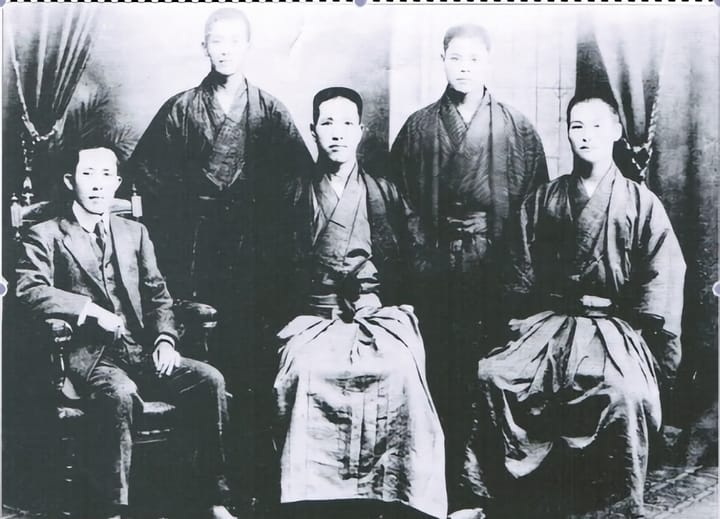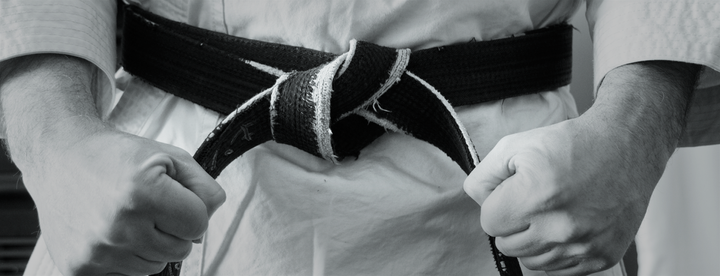The history of Karatedō is easier to understand with a Timeline.
[Editor's Note: This article is based on the lecture notes from the History of Karatedō Part One seminar; the video of the full two-hour presentation is available to Goju students here.]
History is important. It gives context to the present, it explains the past, and it helps us build the future.
The history of karatedō, however, is particularly challenging to understand for several reasons.
The Vast Sweep of the History of Karatedō
First, we’re looking at something that developed and has existed in various forms for more than a millennia — from its early gestation as a fighting and combat system, and a set of thoughts and ideas about conflict, all the way to the twenty-first century and all our technology and information-dissemination technologies.
The timespan involved is problematic for more reasons than just its length, however.
We simply have limited sources of information from the far reaches of the history of karatedō, and so we must rely on sparse written and orally-transmitted information. That makes it more challenging to understand the early formation of the precursor martial arts of karatedō.
Martial Arts as Military Advantage
Second, the nature of all martial arts, and quite especially karatedō is that they are considered “military secrets” — or at the very least, they provide advantage to families, communities, and nations at war. One doesn’t spread around secrets that give you an advantage, and certainly not secrets that might determine whether you survive or not.
And that means even in societies that culturally were adept (one might even say, pedantically bureaucratic) at recording and memorializing everything, information pertaining to any martial art is hard to come by.
Martial Arts as a Profession
And lastly, the nature of how martial arts is taught and trained also tends to make it harder to gather historical sources of information about karatedō. Why is that? It’s because martial arts and specifically karatedō have been taught on a very personal basis, from one teacher to a small group of students.
And those teachers relied on that teaching as their primary sources of livelihood as well as their life-missions. They weren’t about to spread their knowledge far and wide because that meant the end of that livelihood (although this would change in the early twentieth century).
So for all these reasons, understanding the history of Karatedō is challenging. But it’s well worth making the attempt.
And so, to understand the sweep of the history of karatedō, here's a timeline to put major events in perspective.
A Karatedō Timeline
| Year | |
|---|---|
| 2700 BC | The Yellow Emperor practices some form of martial arts in early China; use of weapons as part of that martial art; and we have references to a form of impact and stand-up grappling called jǐao dǐ" (角抵) |
| 776 BC | References to pankration, a martial art associated with the Ancient Olympic Games in Greece. Includes striking, grappling, kicking, and more. |
| 500 BC | Sun Tzu mentions “martial arts” in China’s seminal Art of War. The mention positions martial arts as a separate concept but the reference is likely general in scope. |
| 320 BC | Alexander the Great sweeps across Asia Minor, including Persia and Western India. He brings Hellenic (Greek) culture with him, including most likely pankration. |
| 300 BC | Jiao li" (角力) was first referenced in the Classic of Rites during the Zhou Dynasty in China. Jiao li supplemented throwing techniques with strikes, blocks, joint locks and attacks on pressure points. These exercises were practiced in the winter by soldiers who also practiced archery and studied military strategy |
| 23 BC | In Japan, proto-Sumo matches were being held as early as 23 BC, and were effectively based on a version of jǐao dǐ (either introduced to them by China or via Mongol traders and warriors). |
| 527 AD | Bodhidharma, arrives at the Shaolin Temple in China in 527. According to legend, he spent nine years meditating in a cave of the Wuru Peak and initiated the Chinese Chan Buddhism tradition at the Shaolin Temple (in Japanese, Zen Buddhism), as well as teaching the “physically weak” monks a system of martial arts.
This is one of the first written references to a defined system of martial arts that we have. Written references to the Bodhidarma refer to him as a “blue eyed” foreigner from the far West and South — this is taken to mean either India or Persia. |
| 770 AD | The written history of Jujitsu first begins during the Nara period in Japan combining early forms of Sumo and various Japanese martial arts which were used on the battlefield for close combat. Note this is a striking combat art with punches, kicks, blocks, and grappling (unlike modern jujitsu and judo). |
| 970 AD | Emperor Taizu of Song creates a Shaolin-based fighting style known as Taizu Changquan (太祖長拳; literally "Taizu Long Fist"). It is the core style of the present-day Long Fist style and as such, is the first Wu Shu style in China.
Whether he really did invent this style or if it even dates from this time is not actually known. However, this is the first discrete martial arts style and school in China outside of the ad hoc style of the Shaolin Temple. |
| 1000 AD | In Okinawa (then an independent Ryukyu Kingdom), a system of unarmed fighting known as Te (literally "te" is "hand" in the Okinawan dialect) begins among the the upper class of the Ryukyuans. It is somewhat comparable to the Jujitsu in Japan, which continues to evolve to complement the kenjutsu (martial arts comprising edged weapons) of the Japanese upper-class. |
| 1392 AD | After trade relationships with Okinawa were established with the Ming dynasty of China in 1372, some forms of Chinese martial arts were introduced to the Ryukyu Islands by merchants and sailors from China, particularly Fujian Province (southern Chinese province). A large group of Chinese families moved to Okinawa around 1392 for the purpose of cultural exchange, where they established the community of Kumemura in Okinawa and shared their knowledge of a wide variety of Chinese arts and sciences, including the Chinese martial arts. |
| 1609 AD | Japan (in the form of the Shimazu clan) successfully invades Okinawa. While there had been a great deal of cultural exchange (including martial arts) between Okinawa and Japan previously, much more cross-pollination now occurs. Japan’s jujitsu influences Okinawan te (by now heavily influenced by wu shu from Southern China), and vice versa. |
| 1806 AD | Sakukawa Kanga (1786–1867) had studied martial arts and bo in China (according to one legend, under the guidance of Kosokun, originator of kanku dai kata). In 1806, he opens a martial arts school the city of Shuri in Okinawa. Effectively, this begins the era of the dojo as a school and training hall owned and operated by its instructor (Sensei). However, for most of the rest of the 19th Century, most students train at the home (and garden) of their instructor. |
| 1820 AD | Around the 1820s Sakukawa's most significant student Matsumura Sōkon (1809–1899) taught a synthesis of te (Shuri-te and Tomari-te) and Shaolin wushu (Chinese 少林) styles. Matsumura's style would later become the Shōrin-ryū style of karatedo. Matsumura taught Itosu Ankō (1831–1915) among others. |
| 1881 AD | Higaonna Kanryō returns from China after years of instruction with Ryu Ryu Ko and founded what would become the style of karatedo known as Naha-te. One of his students would later be the founder of Goju Ryu Karatedō, Chōjun Miyagi. |
| 1900 AD | Itosu Anko helps to adapt a variety of kata to form the Pinan/Heian kata family, and in 1901, Itosu helped to get karatedō introduced into Okinawa's public schools. His students included the founder of Shotokan Karatedō Gichin Funakoshi. |
| 1908 AD | Six students of karatedō in Shuri, Okinawa participate in a demonstration of karatedō before a group of visiting officials from Tokyo — including Jigorō Kano. |
| 1910 AD | On invitation of Jigorō Kanō students from Okinawa and their leading teachers (including Gichen Funokoshi) visit Kanō’s Kōdōkan in Tōkyō. For about two hours they gave explanations of karatedō, performed kata, and demonstrate tameshiwari in front of Kanō and other high-ranking judo-ka. Kano and Funokoshi form an important professional relationship. |
| 1916 AD | Returning from one of two trips to China, Chōjun Miyagi returns to Naha, Okinawa and opens his dojo (housed in his home and garden). While he would not officially name his style Goju Ryu until 1929, in recognition of his leadership in formalizing and spreading karatedō, Goju-Ryu, became the first style to be officially recognized by the Dai Nippon Butokukai. |
| 1920 AD | (Approximate year) Chosen Miyagi formalizes the Junbi Undo (preparatory exercises) that are formally adopted by almost every karatedō dojo over the next two decades. The Junbi Undo has existed for centuries before, but Miyagi’s work creates one unified version, based on then-current exercise research and Miyagi’s own scholarship. |
| 1921 AD | Tensho Kata is formalized as "softer Sanchin Kata " by Chojun Miyagi to balance the “harder” Gō aspect of Sanchin with the Ju aspect of Tensho. It is a formalized version of the Southern Chinese Kung Fu kata Rokkishu. |
| 1922 AD | With Jigoro Kano’s help, Gichen Funakoshi moves to Tōkyō |
| 1927 AD | Jigoro Kano visits Okinawa to lecture on Judo and to make additional contacts with teachers of karatedō. At a demonstration of karatedō, he meets Chojun Miyagi, is deeply impressed by his skill and scholarship, and begins another important professional relationship. |
| 1932 AD | Chojun Miyagi formalizes a new Sanchin kata, based on the teachings he received from Higaonna Kanryō, and publishes a paper on the kata. This version becomes the dominant version shortly after. (Sanchin itself had existed for centuries before; written references to it date back about 600 years and possibly more). |
| 1936 AD | In 1936, Gichen Funakoshi built the first Shōtōkan dojo in Tokyo. |
| 1938 AD | In May 1938, Jigoro Kanō dies at sea, during a voyage that he made as member of the International Olympic Committee on board the NYK Line motor ship Hikawa Maru. |
| 1945 AD | Gigo Funakoshi, the son of Gichen Funakoshi, and the chief instructor of the Shotokan dojo dies of tuberculosis at the age of 39 on 24 November 1945 (in part due to the terrible conditions in Japan at the end of World War II), in Tokyo, Japan.
Gigo Funakoshi is credited with the introduction of Kiba Dachi in preference to Shiko Dachi, and implementing Kokutsu Dachi as a standard fighting stance (which he took from Kendo) instead of Neko Ashi Dachi. Gigo Funakoshi was also a strong proponent of physical conditioning and promoted jyu kumite (semi-contact and full-contact sparring). |
| 1946 AD | Mas Oyama enrolls in Waseda University School of Education to study sports science. His growing interest in martial arts leads him to train at the Shotokan dojo, which he does for almost a year, and then begins training in Goju Ru with Nei-Chu So (a student of Chojun Miyagi) until about 1950. |
| 1953 AD | Chojun Miyagi dies in Okinawa on October 8, 1953 after suffering a second heart attack. |
| 1953 AD | Mas Oyama opens his own Goju Ryu karatedō dojo, which he names Oyama Dojo in Tokyo but continues to travel around Japan and the world giving martial arts demonstrations, which included knocking live bulls unconscious with his bare hands (sometimes grabbing them by the horn, and snapping the horn off). His dojo was first located outdoors, in an empty lot but eventually moved into a ballet school in 1956. |
| 1954 AD | After Chojun Miyagi's death, his most experienced pupils at the time of his death were Sekō Higa, Meitoku Yagi, Eiichi Miyazato, Koshin Iha, and Seikichi Toguchi.
The family of Chojun Miyagi communicated that the founder of the style wanted Eiichi Miyazato to succeed him.
The Goju Ryu committee, formed by major students of Miyagi (which included among others Nakaima, Madanbashi, Meitoku Yagi, Iha Koshin) at a meeting in February 1954 voted almost unanimously for Eiichi Miyazato as the official successor to Chojun Miyagi. Miyazato continued to teach from Miyagi’s Garden Dojo until 1957, when he built the Jundokan dojo with the help of the Miyagi family. The Jundokan continues to exist to this day, but is considered a minor branch of Goju Ryu. |
| 1957 AD | Gichen Funakoshi developed osteoarthritis in 1948, and died on April 26, 1957. Following his death, a number of organizations continued to promote and teach Shotokan Karatedō. |
| 1957 AD | Mas Oyama's Goju Ru curriculum developed a reputation as a tough, intense, and hard-hitting style, and while fundamentally still Goju Ryu, Oyama edited substantial portions of it and simplified parts, and in disgust with the prevailing (and in his view, weakened) contemporary styles of Goju and Shotokan, formally announced his own style and named it Kyokushinkai Karate-Do (ultimate truth). |
| 1963 AD | With some frustration over the lack of success of Miyazato, the Miyagi family publicly recognizes Meitoku Yagi as one of the successors of Miyagi and gives him one of Miyagi's karate gis and and his formal belts.
Yagi opened his own dojo in the Daido district of Naha, and named it Goju-ryu Meibukan, meaning "house of the pure minded warrior." It later moves to the Kuma district of Naha, and Yagi goes on to found the IMGKA, one of the two main branches of Goju Ryu. (The other, the IKGA, was founded by the Tokyo-based student of Chojun Miyagi, Gogen Yamaguchi). Read more about Meitoku Yagi here. |
| 1986 AD | On April 29, 1986, Japan names Meitoku Yagi a “Living National Treasure) (ningen kokuho) for his contributions to the martial arts. |
| 1994 AD | Mas Oyama dies at the age of 70 in Tokyo, Japan on April 26, 1994, due to lung cancer. |
| 2003 AD | Meitoku Yagi dies on February 7, 2003; as late as the previous year, at age 91 he as still performing demonstrations of katas. At the time of his death he was considered the most senior Karateka in the world. |





